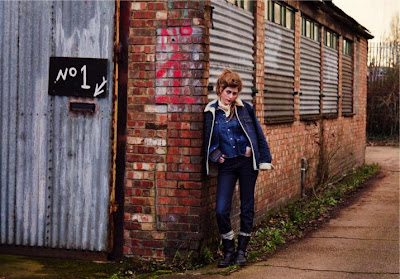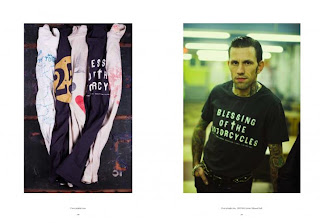The motor bike itself was born in the late 19th century when Gottlieb Daimler thought it a good idea to try attaching a gasoline powered engine to a traditional bicycle. And what a good idea it was! The motor bike remains to this day an admired and popular form of transport.
 It wasn't until World War I, however, that the idea of developing special biker clothing came about. At the time, farmers were selling vast amounts of horse hide for the production of military clothing for aviators and tank crews. Leather is of course a very strong material that can last for a long time so by the end of the war the supply far exceeded demand, and so new uses needed to be spawned for the leather jacket.
It wasn't until World War I, however, that the idea of developing special biker clothing came about. At the time, farmers were selling vast amounts of horse hide for the production of military clothing for aviators and tank crews. Leather is of course a very strong material that can last for a long time so by the end of the war the supply far exceeded demand, and so new uses needed to be spawned for the leather jacket.Bikers were happy using the recycled pilot jackets until 1928 when clothing manufacturers, the Schott Brothers felt the time was right to develop a dedicated biker jacket.
The biggest differences between the old and the new were the use of naked cowhide, and heavier construct making, which meant the biker jacket provided more protection to the rider.
Originally popular only among policemen and a small part of society, the jacket acquired its true fame and reputation a few years down the line, in the late 1940s when a riot broke out in California. As it turned out, it was far from being a riot, and was actually just a street party gone a bit wild. Due to the presence of many men on motorbikes, the image of bikers as "bad boys" appeared on the scene, later encouraged by the movie "The Wild Ones".
The Wild One (1954)
The Second World War also influenced the history of the garment. With it came the bomber jacket that grew into a major trend post-war. Many former army men formed motorcycle clubs, which became known as gangs. It became common to see patches and other insignia sewn onto jackets to personalise them
























































